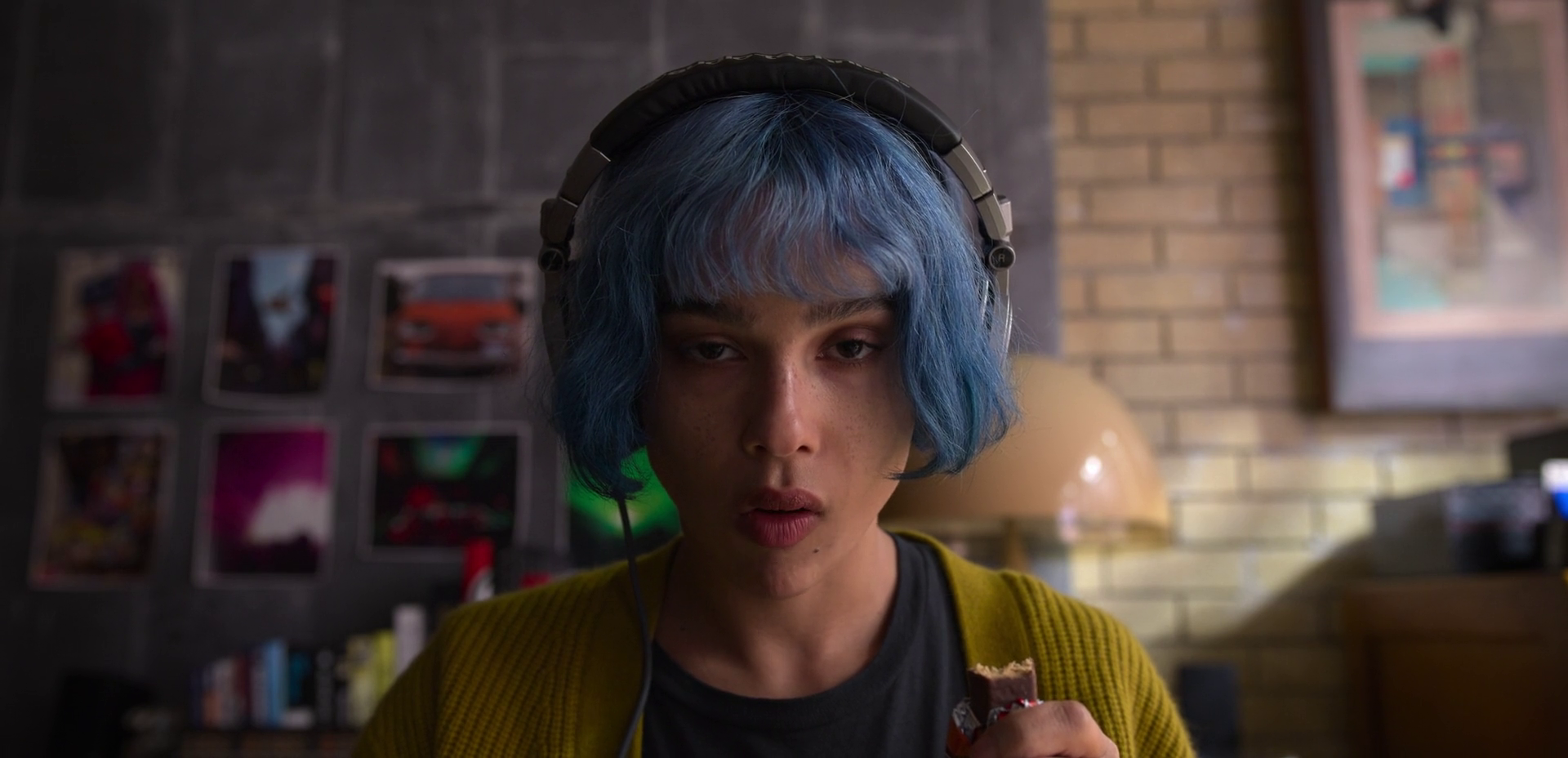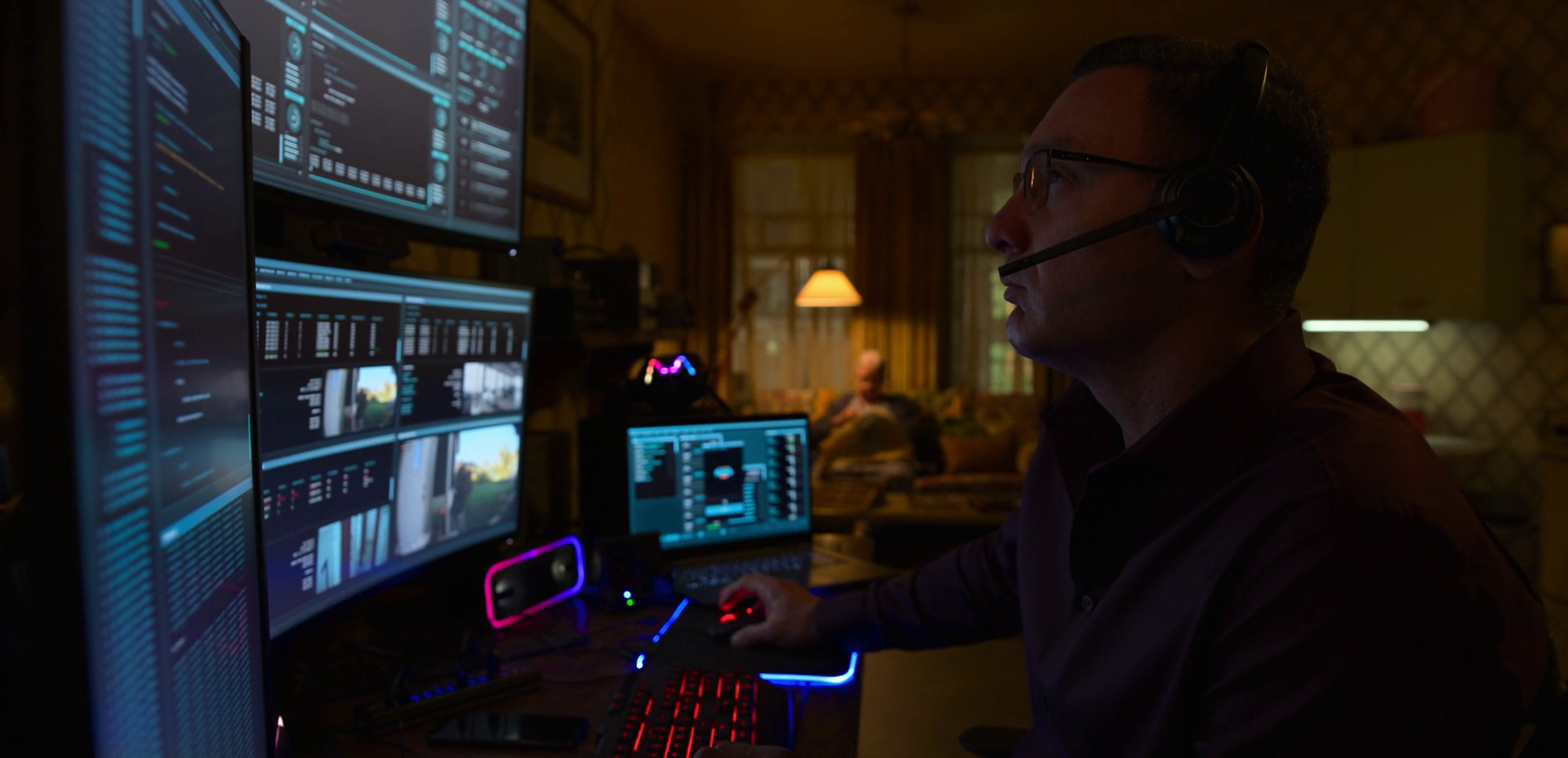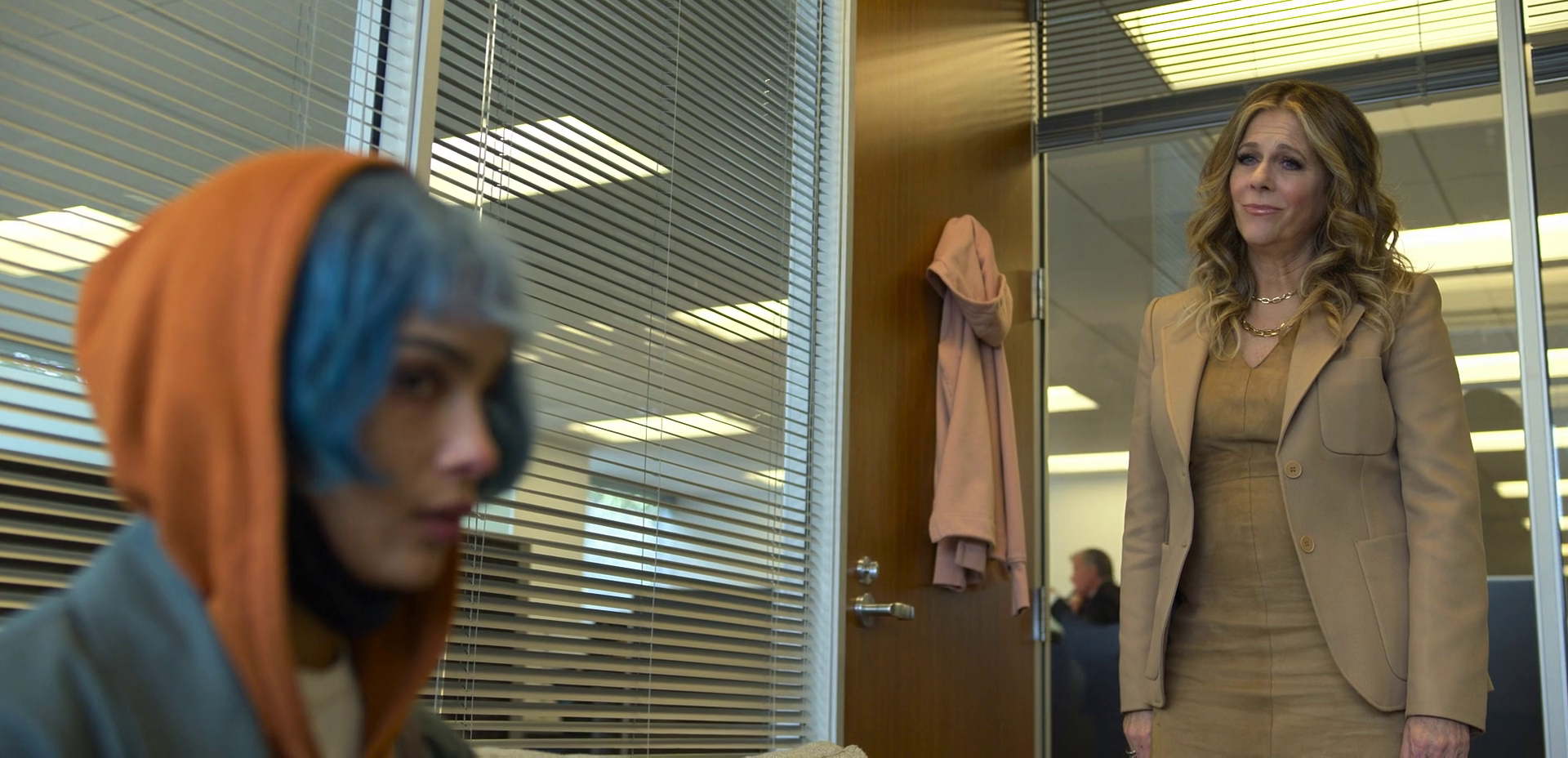Kimi Movie Ending Explained & Themes Analyzed: Kimi, the 47th directorial work by Steven Soderbergh (according to IMDb), is a staggering number, made even more staggering once you realize that it belongs to the robust output that the director managed to produce even after his supposed “retirement.” Soderbergh’s movies made after his retirement phase, including High Flying Bird, Unsane, and No Sudden Move, have somehow become more and more sound and smooth in terms of technical plotting and filmmaking prowess, even as he is experimenting with different genres and styles.
Dabbling with a script by David Koepp, an extremely prolific screenwriter known for crafting screenplays for blockbusters, Soderbergh crafts a surveillance thriller, a mixture of Rear Window by Alfred Hitchcock with a dash of The Conversation by Francis Ford Coppolla but updated to a modern 2022 sheen. The fact that they manage to weave in the COVID – 19 pandemic almost seamlessly would make you wonder whether the movie was made as a commentary on the pandemic itself. To some extent, it is.
Recommended: The 15 Best Steven Soderbergh Movies, Ranked
Kimi Plot Synopsis and Summary:
As the movie opens, we see an online zoom interview taking place with the CEO of Amygdala, a multi-billion dollar tech company that developed Kimi. This smart speaker is ostensibly the competitor of Siri and Alexa. As the interview progresses, it is revealed that instead of utilizing an algorithm to decode the user requests and produce required responses, there are employees called Voice Interpolation experts whose job is to continually update, understand and verify the differing nuances of language and include them as code in the workings of Kimi. This level of human additive interface could improve the search algorithm of Kimi. Apparently, the company is successful enough that Amygdala will soon hold an IPO, much to the financial gain of its CEO and founder.
Who is Angela and what does she do?
Zoe Kravitz plays Angela Childs, one of the voice interpolation experts on the Amygdala. Her job is akin to the role of a content editor. She takes on a “data stream” for a day where she continually manages requests given to Kimi, the Alexa-like device that in this world has proliferated the current landscape of Seattle.
From ordering food to texting and answering booty calls from the opposite building’s neighbor, Kravitz’s Angela leads a more or less comfortable life except for her agoraphobia; this forces her to venture outside as little as possible. Before we move ahead to know what happens in the movie, be warned.
What does Angela find in one of her work recordings?
Kimi, the movie is a slow-burn, but developing first act ultimately segue-ways into the second act when during her work hour, Angela identifies a recording that captures a sexual assault. In an expertly edited and smoothly constructed scene, Soderbergh reveals that a Kimi unit has managed to capture an audio recording of a sexual assault taking place.
Related to Kimi Movie Explained – Memento Movie Explained: Ending, Themes, and Intercuts Analysed
What does Angela do when she discovers the recording?
Troubled at this discovery, Angela sends a mail to the respective higher-up at her company. In the typical corporate fashion, he advises her to either delete it by flagging the file as degraded audio or, if she is that dogged enough, to contact Natalie Choudhury, the head of Organic Interpolation. Suspicious and not fooled by the corporate double-speak, Angela, with the help of her colleague Boris, manages to identify and access the recordings belonging to the Kimi unit of the victim of the sexual assault.
As Angela listens to the recordings, she realizes that the woman named Samantha was raped and killed after she threatened to reveal a closely guarded truth. Attempting to relay this information to Natalie Choudhury, she tries reaching her on the phone. After returning her call, Choudhury convinces Angela to come to her office in person to discuss the events. The FBI is informed of the same. However, when she reaches the office, battling her neuroses and her agoraphobia with as much courage as she can muster, she is suspicious of Natalie’s reticence in informing the FBI, preferring to cite Angela’s mental health as a form of invalidation.
Angela realizes that people are after her, and they do not want this information to be leaked. What follows is a chase on foot through the open roads of Seattle. Angela is briskly walking towards the FBI office to inform of the crime herself. Unbeknownst to her, a hacker has begun tracking her and sent goons after her.
The goons manage to capture her, throwing her into unmarked vans, only being saved by protesters. The newsreel in the first act explains the protestors’ presence in the story (i.e., the extent of their participation). She manages to escape with her finally caught and taken to her house.
Thanks to the intervention of another neighbor, a kindred spirit to her of sorts, who knows her identity and gets involved in this mess. These events finally culminate in a home invasion scenario where Angela uses Kimi’s integration into smart homes to her advantage, gaining the upper hand over her captors; while also managing to save her neighbor’s life in the process.
Kimi Movie Ending Explained:
Drugged and drowsy because of being injected by her kidnappers, Angela manages to escape to her apartment because of her neighbor Kevin’s (Devin Ratray) surprising but not unwelcome intervention. Even as Angela manages to enter her house and find the leader of the gang already inside and waiting for her (having gathered the information about her house from the hacker who was already tracking her while she was escaping in the second act). She is then interrogated by her captors about the location of the copies she might have made for the recording she had discovered.
Angela uses the concept of smart homes and the integration of Kimi in the electricity and smart lights to confuse her captors by playing “Sabotage” by Beastie Boys while darkening her house to help herself escape to the closet. When there, she opens the ceiling access leading to her attic. She moves through the vents to reach the apartment above her; which was getting repaired during one of her work calls. There, she finds a nail gun and decides to use it as a weapon.
In the middle of the confusion, the pen drive and the knife used to injure Kevin had fallen to the ground. The climax crescendos, with Kevin surprising one of the goons by stabbing him with the knife, Angela uses her nail gun to kill one goon through the forehead; while shooting the leader thrice in his back. Then in a moment of surprising dark humor, she asks for Kevin’s name and then opens the door revealing Terry with a bouquet of roses standing outside. Interrupting his speech, Angela instructs Kimi to call 911 to come for medical aid and informs her of the three dead bodies in her apartment.
Recommended: Antlers Movie Explained: Ending & Themes Analysed
Why did the events in the movie Kimi happen?
The reason why Zoe Kravitz’s Angela got involved in these events in the first place is that she flagged an audio file that had captured a violent incident. Angela later figures out that the person who raped and killed the victim Samantha was the CEO of Amygdala and the founder of Kimi himself, Bradley Halsing. The goons sent after Angela were all hired by him, in an effort to remove her out of the picture and destroy all evidence linking him to the murder.
The identity of Halsing was previously revealed to the viewers at the beginning of the movie during the zoom interview, and it is later revealed that he was the one who had gifted Samantha with a Kimi unit, unknowingly framing himself in the process. The movie ends with Halsing being arrested for his crimes.
Are the events that take place in Kimi based on a real-life incident?
The real-life incident is referenced in the movie itself via dialogue – The Amazon Arkansas case. As reported by NPR in 2017, the case had revolved around an Amazon Echo, a personal recording device that the investigators believed held vital clues regarding the murder that occurred in November 2015.
The device was recorded about a man in Arkansas named James Bates, who had some friends over at his house to watch a football game. One of those friends was found dead in a hot tub in the backyard in the morning. Bates was charged with murder to which he had pleaded not guilty. The investigators had seized the amazon Echo and had wanted to know whether the device had recorded anything significant during the time of the murder.
Amazon had initially declined to share the data from its servers, fanning speculation about an invasion of privacy and the subsequent conversation that would follow, but they ultimately relented when Bates himself said that he did not mind the audio being shared.
However, the case apparently came to very little fruition, because the investigators were forced to drop the case. It won’t be a surprise if the makers of the film were inspired at least a little bit by this real-life event.
Related to Kimi Movie Explained – Annette Movie Explained: Ending, Themes & the Pitfalls of Showbiz Analysed
Kimi Movie Themes Explained:
Agoraphobia and the interweaving of technology:
The first theme is the agoraphobia that Angela suffers from and how the resultant pandemic is both indulging in said phobia while keeping our protagonist at arm’s length from the world around her. Consequently, it also ties into the backstory of Angela’s character. Her agoraphobia and anxiety were a direct result of sexual assault, revealed in bits and pieces by a zoom call and a facetime with her therapist and her mother respectively.
With the pandemic in full swing, the ease of technology causes her to have food, as well as contact with the people she desires, right there at her fingertips. But it only causes her neuroses to exacerbate. From being cold and frigid to her friend-with-benefits Terry (Byron Bowers), to hanging up on her therapist because she doesn’t want to confront her fears to being combative with her mother and treating her tooth abscess with antibiotics instead of going to the dentist, COVID might have only enabled Angela to live comfortably with her neuroses.
It is however harming her well-being – a very clever way of using the pandemic as a plot device to accentuate the hold of technology in the daily lifestyle of humanity.
Technology and the morality of its usage
It brings us to the second and the principal theme at play here. The morality of technology is the primary dilemma. The morality of technology is dependent on the usage by the user itself; hence, the creators of the technology are insistent on ensuring that the knowledge does not go out. So they utilize their proprietary technology to identify Angela’s location and figure out methods to make her capture easier.
Technology itself is a neutral party in this movie. It managed to record a violent crime on its own. What the users decide to do with the information feeds into the dilemma of morality here. However, in the final act, the tables get reversed. Because technology, now at the hands of a person with morality more skewing towards the side of the angels, is utilized in a far less violent and more clever and indigenous means to help the protagonist get out of a jam.
In a way, the naming of the film is apt. Kimi is abler towards the conflict; while also being utilized to end the conflict by simultaneously providing proof to bring a man to justice. Not the deepest movie to decode, but as a genre exercise, Kimi is still quite lucid in its thematic base.













